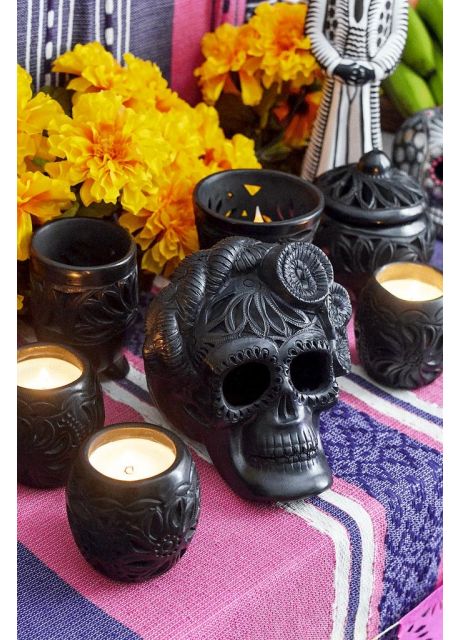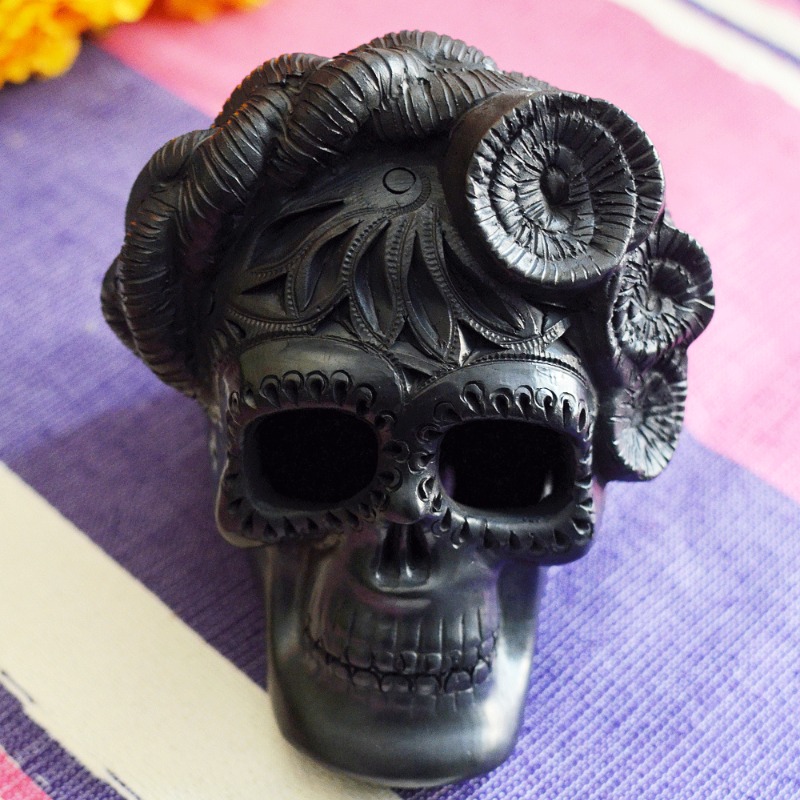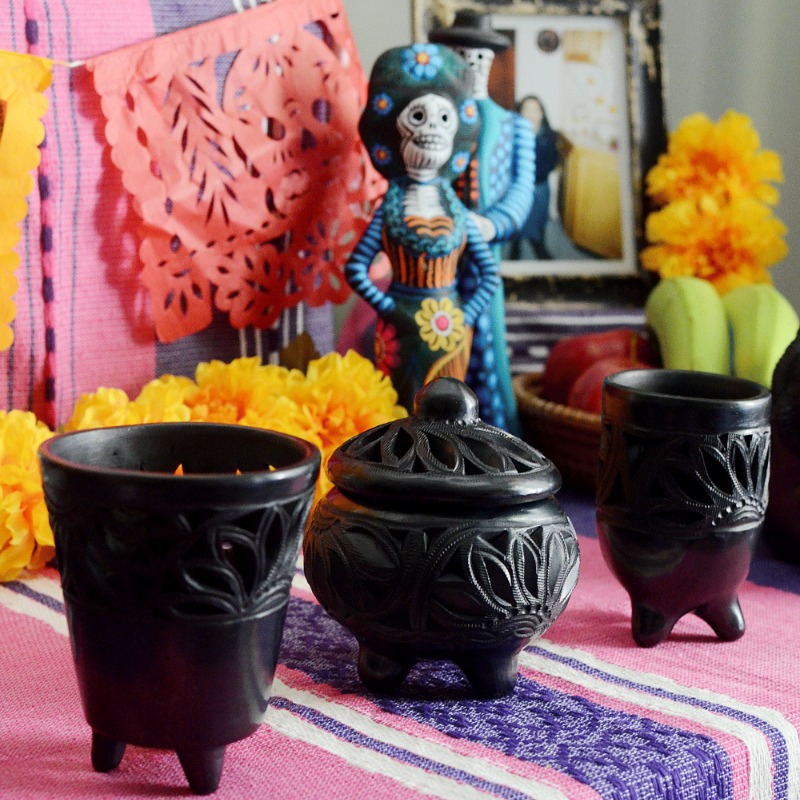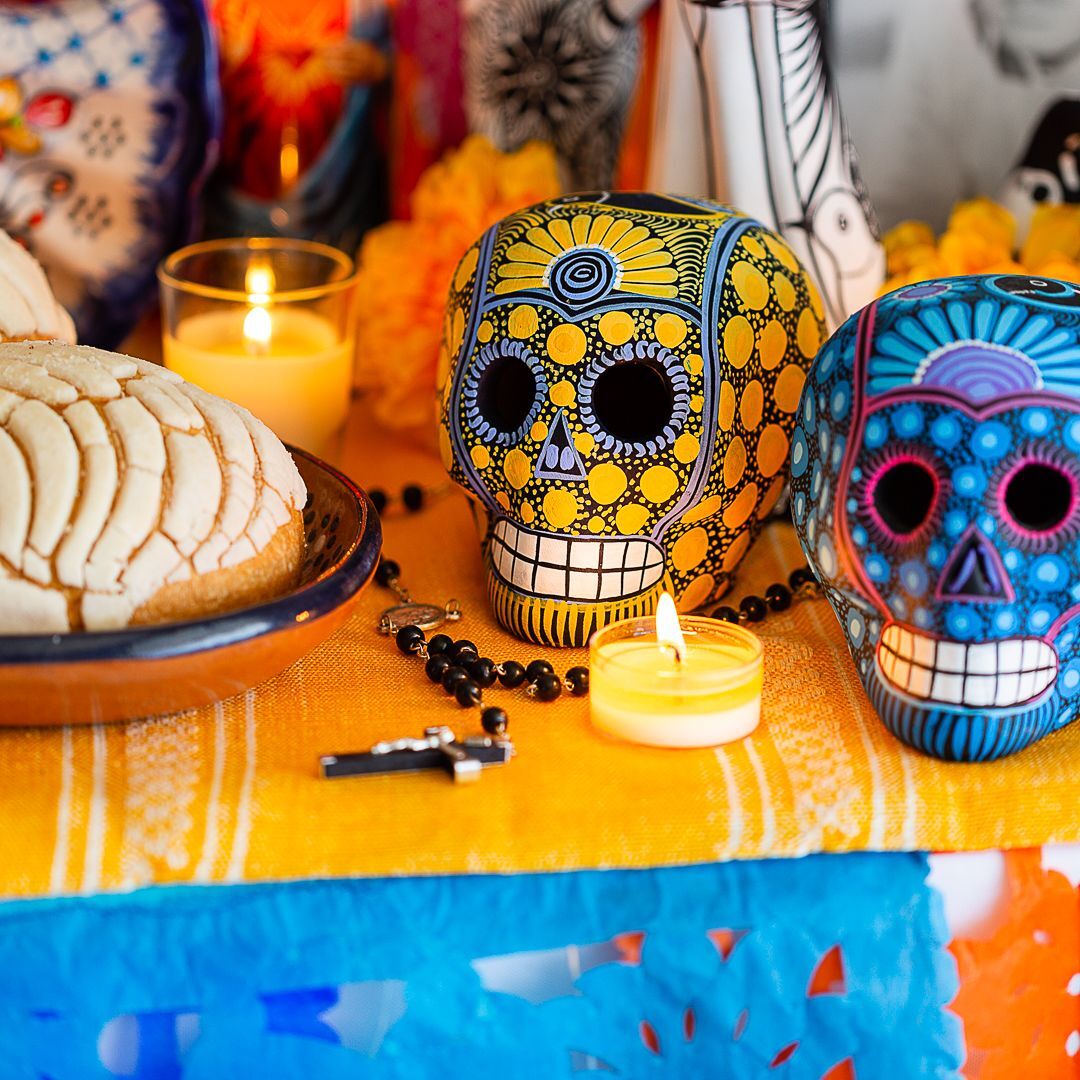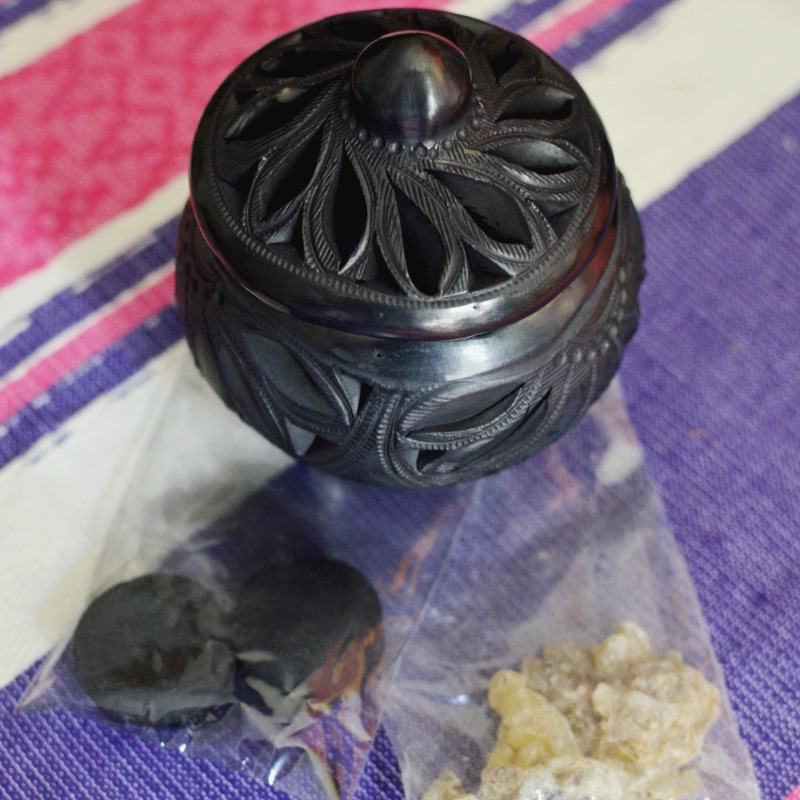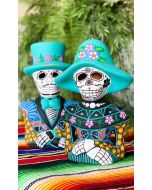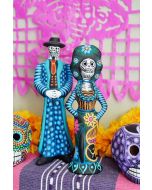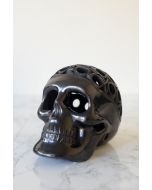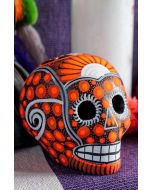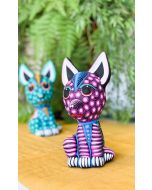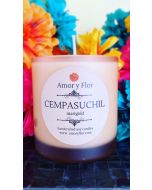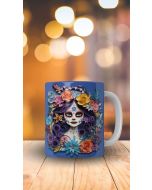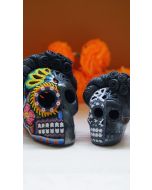(1) Barro Negro Muertos Calavera Skull (4 in x 4 in x 5.5 in)
(1) Barro Negro Copalero (Incense Burner)
(1) Barro Negro Velero (Candle Holder)
(1) Barro Negro Salero (Salt Holder)
(1) Set of Hand-Stamped Papel Picado
(1) Amor y Flor Tea Light: Cempasuchil
(1) 4oz. Bag of Copal Virgin
(1) 4oz. Bag of Rock Salt
(1) 4oz. Bag of Charcoal
For new members only: When selecting this box as your first box, there is a three-box purchase minimum before canceling.
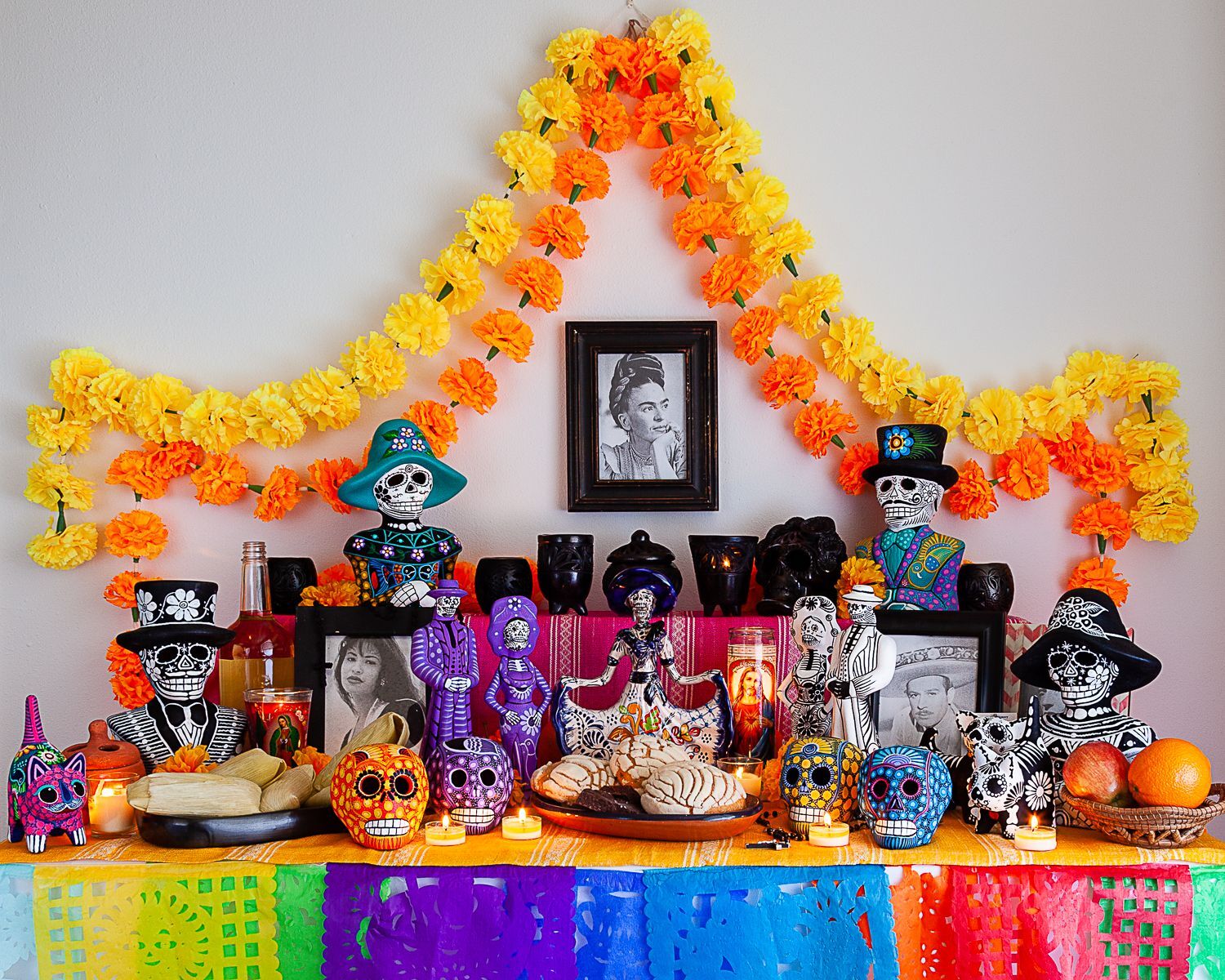
Remember your loved ones with MyCajita’s Day of the Dead box! We've custom-designed an altar set with nine elements: three hand-made Barro Negro altarpieces, copal virgin, rock salt, charcoal, papel picado, and a Barro Negro calavera skull.
Barro Negro Calavera Skull:
Barro Negro (black clay) dates back to 500 BC. It was a traditional craft of the Zapotecs and Mixtecs of the central valleys of Oaxaca.
MyCajita’s Barro Negro Calavera is a beautiful showpiece, featuring a flower and braid with intricate floral carvings on the skull and unique face carvings to mimic the traditional face painting of Dia de los Muertos.
Barro Negro Calavera Skull:
Barro Negro (black clay) dates back to 500 BC. It was a traditional craft of the Zapotecs and Mixtecs of the central valleys of Oaxaca.
MyCajita’s Barro Negro Calavera is a beautiful showpiece, featuring a flower and braid with intricate floral carvings on the skull and unique face carvings to mimic the traditional face painting of Dia de los Muertos.
Barro Negro Copalero, Velero, Salero:
The Zapotecas celebrated Day of the Dead by burning copal to purify the area, lighting a fire to help guide the souls, and using cal/salt to keep the souls pure during their visit.
Barro Negro Copalero, Velero, Salero:
The Zapotecas celebrated Day of the Dead by burning copal to purify the area, lighting a fire to help guide the souls, and using cal/salt to keep the souls pure during their visit.
Papel Picado:
Hand stamped by artesanos from San Salvador Huixcolotla, Puebla, this 15ft long string of papel picado can be hung above or around your ofrenda with varied colored panels and scenes of Dia de los Muertos. It’s believed that when the Papel Picado moves, your loved ones have entered the room.
Papel Picado:
Hand stamped by artesanos from San Salvador Huixcolotla, Puebla, this 15ft long string of papel picado can be hung above or around your ofrenda with varied colored panels and scenes of Dia de los Muertos. It’s believed that when the Papel Picado moves, your loved ones have entered the room.
Cempasuchil & Sugar Skull Tea Lights:
The Day of the Dead box comes with an Amor y Flor Cempasuchil scented candle. The light of the candles is said to help the departed find their way home.
Cempasuchil & Sugar Skull Tea Lights:
The Day of the Dead box comes with an Amor y Flor Cempasuchil scented candle. The light of the candles is said to help the departed find their way home.
Copal Virgin, Rock Salt, Charcoal:
Copal is the resin/sap that comes from trees. It has been used for centuries in events and ceremonies as a way to cleanse the location, person, or event. The Rock Salt is said to keep the soul pure while it is visiting us.
Copal Virgin, Rock Salt, Charcoal:
Copal is the resin/sap that comes from trees. It has been used for centuries in events and ceremonies as a way to cleanse the location, person, or event. The Rock Salt is said to keep the soul pure while it is visiting us.
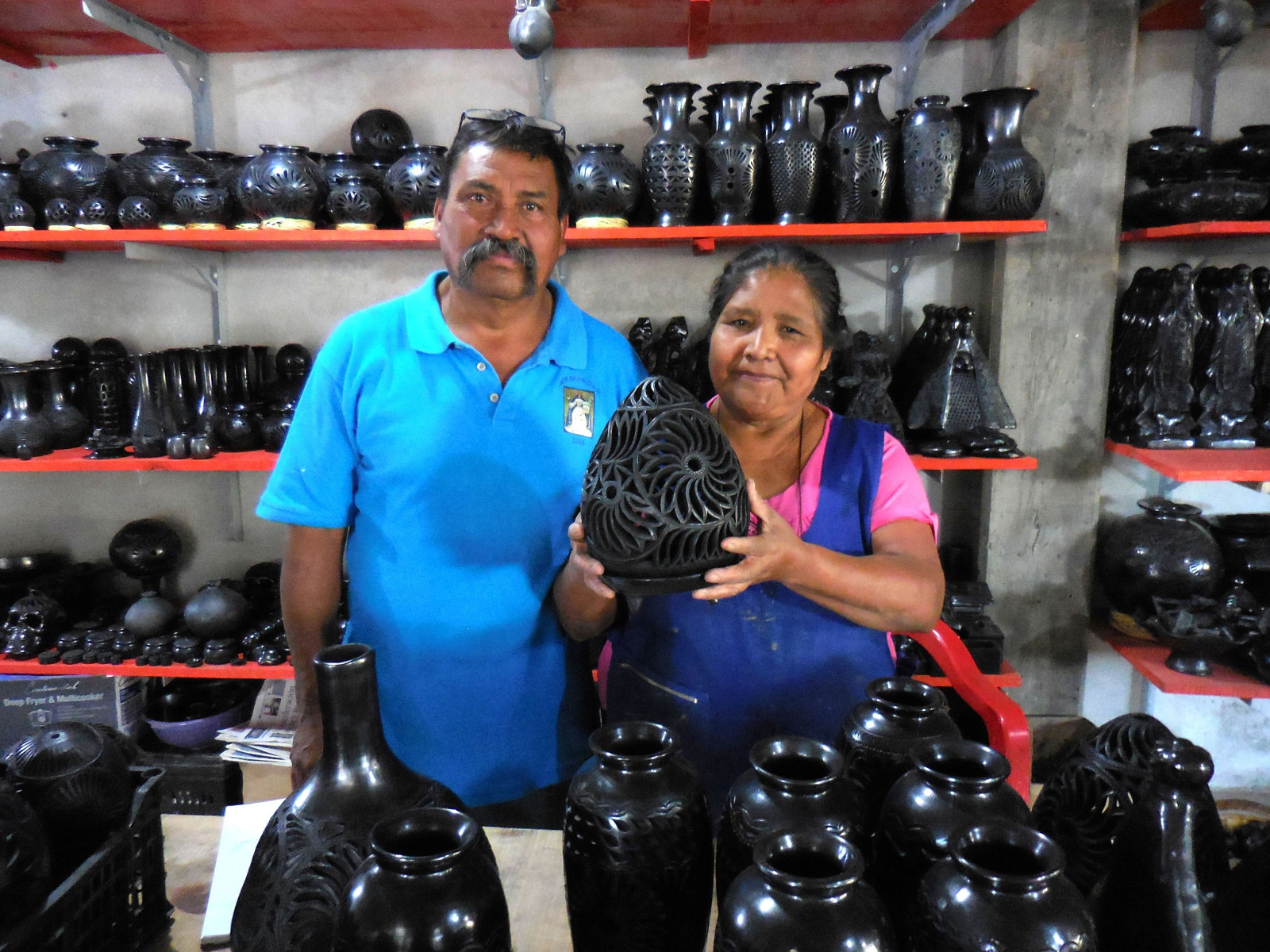
Doña Esther Real and her husband Don Emilio Ortiz have been making Barro negro for many generations and continue the tradition with their three children. Their family business supports 10 families in their community, and they have expanded over the years. Barro negro pottery (“black clay”) is a style of pottery from San Bartolo Coyotepec, Oaxaca, distinguished by its color, sheen and unique designs. The origins of Barro negro pottery extended through the Monte Albán period (500 BC), with examples of it found at archeological sites, fashioned mostly into jars and other utilitarian items. It has remained a traditional craft of the Zapotecs and Mixtecs of the Central Valleys area to the present day. Originally Barro negro pottery was matte, grayish and very sturdy. In the 1950s, it was discovered that you could change the color and shine of the pieces by polishing the clay pieces and firing them at a slightly lower temperature. Just before the formed clay piece is completely dry, it is polished with a quartz stone to compress the surface. After firing, the piece emerges a shiny black instead of a dull gray. This innovation makes the pieces more delicate, but the final piece looks amazing.
YOUR PURCHASE MAKES A DIFFERENCE:
- Artisan Made
- Preserves Tradition
- Supports Small Business
- Job Creator
- Hecho en Mèxico



